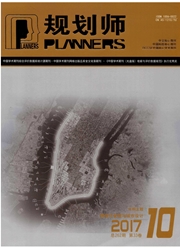

 中文摘要:
中文摘要:
在规划设计阶段,少有学者关注住区可认知空间风环境的模拟与优化。为更加贴近住民对于室外活动空间的风环境需求,研究结合江南水都住区的案例,提出基于句法和数值模拟的可认知空间风环境优化方法。首先,基于句法变量定位出住区可认知空间,基于数值模拟技术模拟出住区室外风环境,从而模拟出住区可认知空间风环境,模拟结果表明,规划方案中有23%的可认知空间风环境区域有待改善;其次,尝试通过底层架空、建筑布局优化及增加风口等措施,优化可认知空间风环境并提出优化方案;最后,对优化方案进行可认知空间风环境模拟,模拟结果表明,可认知空间风环境有待优化的区域由23%减少为5%,优化措施和优化方案较好地改善了住区可认知空间风环境。
 英文摘要:
英文摘要:
Its few scholars focus on the simulation and optimization of wind environment of residential cognitive space. To meet the ventilation demand of human outdoor activities better, the paper proposes the method of optimization of wind environment of cognitive space based on Space Syntax and Computer Numerical Simulation was proposed. Firstly, the cognitive space area of planning scheme was located based on the analysis of syntactic variables, and the outdoor wind environment was simulated based on the computer numerical simulation technology. Thus the wind environment of residential cognitive space of planning scheme was simulated. And the simulated result showed that there existed 23% wind environment area of residential cognitive space needed to be improved. Secondly, measures of overhead building bottom, optimizing building distribution and adding ventilation vent were attempted to optimize the wind environment of cognitive space of planning scheme. Meanwhile, the speciifc optimization scheme was proposed. Finaly, the wind environment of cognitive space of optimization scheme was quantitatively simulated. And the simulated result showed that the wind environment area of residential cognitive space needed to be optimized decreased from 23% to 5%. Thus the optimization measures and scheme optimized and improved the wind environment of residential cognitive space.
 同期刊论文项目
同期刊论文项目
 同项目期刊论文
同项目期刊论文
 期刊信息
期刊信息
